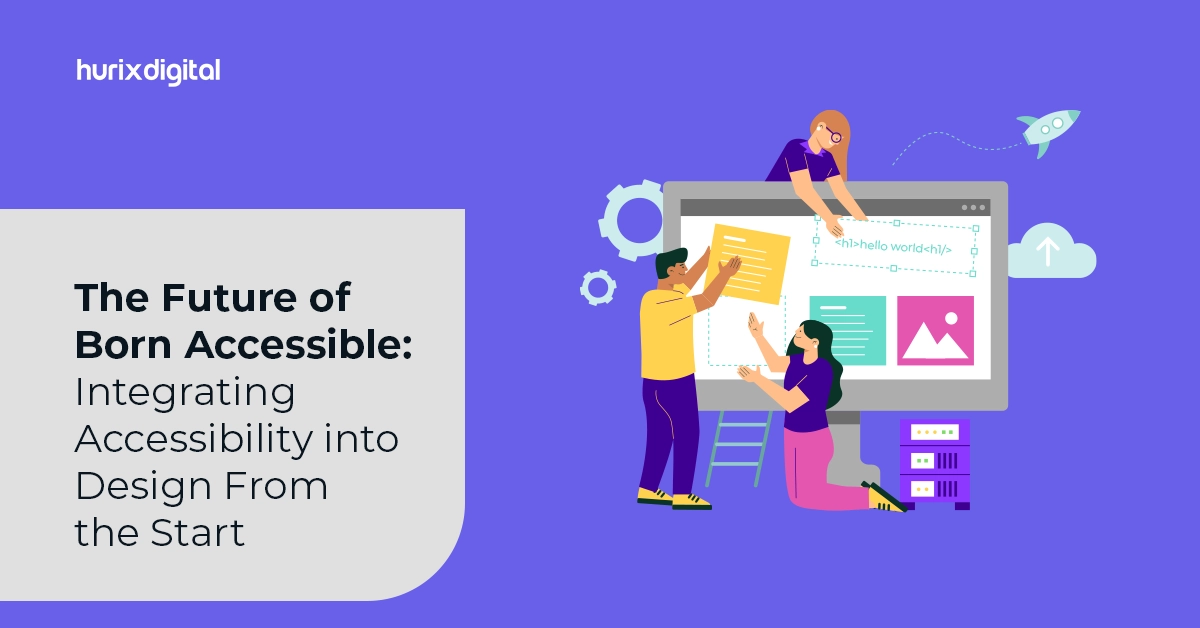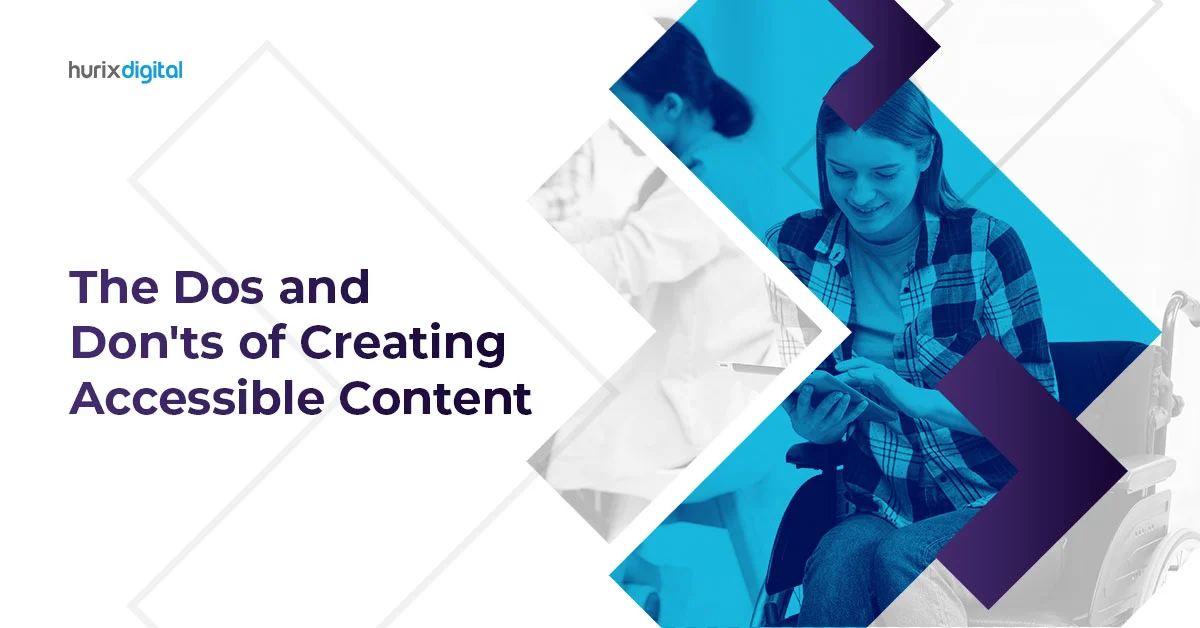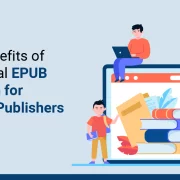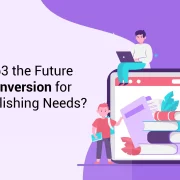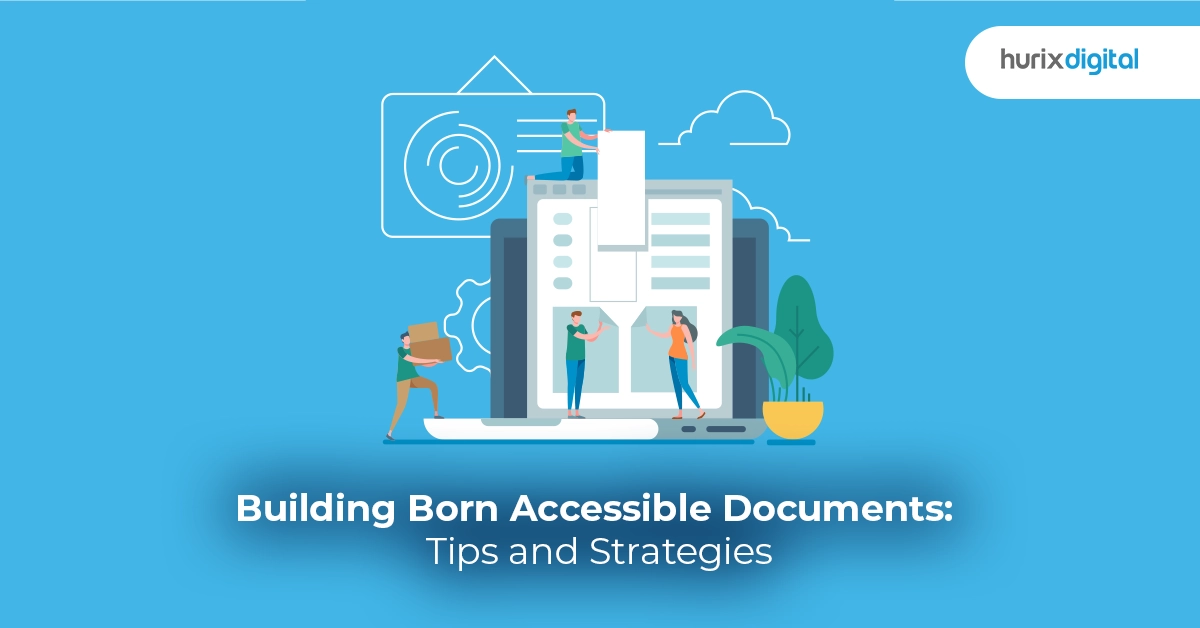
Building Born Accessible Documents: Tips and Strategies
Summary
Learn how to create documents that are accessible from the start. This article provides practical tips and strategies for designing born-accessible content.
Have you ever stumbled upon a document that feels like a frustrating maze?
Tiny fonts, blurry images, and a complete mystery to navigate with a screen reader. Today, where information is power, encountering such roadblocks is simply unacceptable.
This is where Born Accessible Documents (BADs) come in as the ultimate champions of inclusivity. BADs are documents meticulously created with accessibility embedded right from the start. It means everyone, regardless of ability, can access and utilize the information they need.
Such documents are usable by everyone, including people with disabilities who rely on assistive technologies like screen readers. We must be committed to promoting inclusive content creation, and we explore the world of BADs, providing practical tips and best practices to ensure your documents are accessible to all.
Table of Contents:
- Why do Born Accessible Documents Matter?
- Core Principles of Born Accessible Document Creation
- Designing for Accessibility: Key Considerations
- Born Accessible Document Formats: Choosing the Right Fit
- Tools and Techniques for Building Born Accessible Documents
- Born Accessible Best Practices: A Handy Checklist
- In Conclusion
Why do Born Accessible Documents Matter?
Creating Born Accessible Documents (BADs) isn’t just the right thing to do, it offers real benefits. BADs ensure inclusivity for everyone, regardless of ability, leading to a wider reach and an improved user experience.
Additionally, BADs can boost SEO rankings, comply with regulations, and save time and money compared to remediating inaccessible documents later. There are numerous compelling reasons to prioritize Born Accessible Documents:
- Inclusivity and Equal Access: Everyone deserves equal access to information. Born Accessible Documents remove barriers and empower individuals with disabilities to engage with content independently.
- Enhanced User Experience: Accessible documents are easier to navigate for everyone, not just those with disabilities. This translates to a better user experience for all.
- Legal Compliance: Many regions have legal regulations mandating the accessibility of digital content. Creating Born Accessible Documents ensures compliance with these regulations.
- Improved Search Engine Optimization (SEO): Accessible documents are often more easily indexed by search engines, potentially leading to increased website traffic.
- Cost-Effective Approach: Building accessibility in document creation from the start is significantly more cost-effective than retrofitting inaccessible documents later.
Also Read: Navigating the Fusion of Web Accessibility and Internationalization
Core Principles of Born Accessible Document Creation
At the heart of BADs lie core principles like assistive technology compatibility. Documents should be usable with screen readers and other tools people with disabilities rely on. Keyboard accessibility is also crucial, allowing navigation without a mouse. Clear and simple language, a logical structure, and descriptive text further enhance usability for everyone.
Here are the fundamental principles upon which Born Accessible Document creation is built:
- Usability for All: Documents should be usable by individuals with diverse needs, including those with visual, auditory, physical, or cognitive impairments.
- Keyboard Accessibility: Users should be able to navigate and interact with documents using only a keyboard.
- Screen Reader Compatibility: Documents should be structured and coded to be compatible with screen readers used by visually impaired individuals.
- Alternative Text Descriptions: Images and non-text content should have clear and concise alternative text descriptions for those who cannot see them.
- Clear and Consistent Structure: Documents should have a logical structure with clear headings, proper formatting, and consistent use of styles.
- Color Contrast: Color combinations should provide sufficient contrast for users with visual impairments.
Designing for Accessibility: Key Considerations
Accessibility extends beyond technical aspects. Consider color contrast. People with visual impairments may struggle with low contrast between text and background. Think about design elements. Don’t rely solely on color to convey information, as some users may not perceive colors accurately.
Designing with accessibility in mind is crucial for creating Born Accessible Documents. Consider these key points:
- Content Structure: Use semantic HTML tags (headings, paragraphs, lists) to convey document structure.
- Headings: Structure headings logically to create a clear hierarchy and ease of navigation.
- Tables: Ensure tables have clear headers, captions, and proper data organization for screen reader compatibility.
- Links: Descriptive link text should convey the destination of the link.
- Font Size and Readability: Use clear and readable fonts with sufficient size for all users.
- Multimedia: Provide captions and transcripts for audio and video content.
Born Accessible Document Formats: Choosing the Right Fit
Several document formats promote accessibility. HTML offers inherent accessibility features and works well for web-based content. EPUB is ideal for ebooks and allows for a flexible reading experience. PDF remains popular, but ensure it includes accessibility features like tagged structure and alternative text.
Below is the list of document accessibility guidelines:
- HTML (HyperText Markup Language): The foundation of web pages, HTML can be used to create highly accessible documents with proper coding and formatting.
- WCAG (Web Content Accessibility Guidelines) Compliant PDF: While PDFs can be inherently less accessible, creating them using WCAG guidelines can significantly improve their accessibility.
- EPUB (Electronic Publication): An ideal format for ebooks and long documents, EPUB offers excellent accessibility features and supports various assistive technologies.
- Accessible DOCX (Microsoft Word Document): Modern versions of Microsoft Word allow the creation of accessible documents with built-in features and tools.
Tools and Techniques for Building Born Accessible Documents
Creating BADs doesn’t require specialized software. Popular tools like Microsoft Word and Google Docs offer built-in accessibility features. Utilize heading styles, alternative text descriptions, and semantic HTML elements for proper content structure. Many online resources and tutorials can guide you further.
Several tools and techniques can streamline the creation of Born Accessible Documents:
- Accessibility Checkers: Online tools like WAVE and the Accessibility Checker in Microsoft Office can identify potential accessibility issues.
- Screen Readers: Testing documents with screen readers helps identify areas where navigation or content presentation might be unclear.
- Color Contrast Checkers: Tools like WebAIM’s Contrast Checker ensure sufficient color contrast for optimal readability.
- Keyboard Navigation Testing: Testing how the document can be navigated solely with a keyboard exposes areas requiring improvement.
Born Accessible Best Practices: A Handy Checklist
This checklist empowers you to create BADs with confidence. Here’s a handy checklist that will help you:
- Use appropriate heading structures (H1, H2, etc.)
- Include alternative text descriptions for all images.
- Maintain good color contrast between text and background.
- Use semantic HTML elements (lists, tables, etc.) for proper structure.
- Ensure documents are keyboard navigable.
- Test your documents with assistive technologies.
Also Read: PDFs 2.0: The Rise of Smart Remediation with AI and Automation
In Conclusion
Building Born Accessible Documents is a commitment to inclusivity and a valuable step towards a more equitable information landscape. By following these tips and best practices, you can create documents that are accessible, user-friendly, and compliant with regulations.
Hurix Digital can help you navigate the world of BADs and ensure your content reaches everyone. Contact us today to discuss your accessibility needs and create inclusive documents.

Vice President – Digital Content Transformation. He is PMP, CSM, and CPACC certified and has 20+ years of experience in Project Management, Delivery Management, and managing the Offshore Development Centre (ODC).
